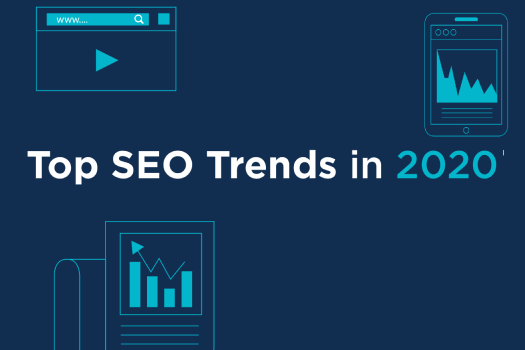The buyer’s journey is not too hard to understand in a thoughtfully designed sales funnel. A sales funnel is step-by-step progress taken by the customer in the entire life cycle. Traditionally, it’s been split up into three areas:
- Awareness: Right from the start when the customer becomes aware of his need of a product in your industry category, searches for options over the web- hopefully, finding your business in the process.
- Consideration: By now the customer has narrowed down his choice to 2-3 options and is looking deeper into the choices by directly comparing the pros/cons, processes, etc.). This usually happens for smaller or directly beneficial individuals, but for larger B2B transactions, this is also the stage when the person doing the research may have to present his findings to higher-ups for decision making.
- Decision/Purchase: After much of the effort by the sales team and interactions with the customer via email, phones, or social media, this would be the stage where the customer decides to buy from you or not.
A study supports the fact that a customer is already 57% through the sales process before they even contact a sales representative, it’s obvious to have useful content in place on your site. But if you’re basing your content marketing strategy only on that three-step journey, you could be leaving a big hole in your strategy-making process.
Ahead in the article, we are going to list out how content can be made and optimized along with the various stages of the buyer’s journey: Developing content for customers in the pre-purchase stage, content for current customers, and content for long term/advanced customers. Businesses also need to understand the fact that a customer journey does not end when they become customers. If you stop creating content for people after they became customers, you could be ruining your retention rates or making customers feel that they you left them in cold as soon as you got their money.
Developing Content For Prospects in The Pre-Purchase Stage
To get it all started you must have the data from your previous or current customers that let you know that:
- What questions did they have in mind before they purchased your products? How did they skim through your competitors and make a choice of buying from you?
- Was there any hiccup or a second thought while making the purchase decision?
- Did you have a hard time finding answers to any specific questions about the product/service?
Such case studies could prove to be helpful at any stage of the process. Answers to these questions will let you jump-start right into creating on-site content, whether it is blogs, or FAQ/knowledge base entries. But, to warn you, nobody wants to hard sell or get obsessed with selling and differentiating their product/service in every blog post on their website.
Content marketing institute lists some suggestions for types of content that work well for B2B businesses in the pre-purchase stage.
Developing Content For Current Customers
After the sale has happened, there is the vital step of “keeping your commitments” and “maintaining customer loyalty”. So how do you plan to keep your customers happy? Did you guarantee that your product could solve a specific problem faced by the customers? Then it had better deliver. In addition to all this, there are natural emotions or hiccups along the way after making a purchase:
- Buyer’s remorse
- New influencers and decision-makers
- Resentment or aggression
- Distrust
- Failure to build value
Every customer is bound to go through a post-sale evaluation of the decision they made to purchase the product. Failure on your part to keep commitments and drive home value and you’ll be opening doors for your competitions to make the next sale.
For many businesses, this means tailoring content for mainly two departments in charge of project delivery, and customer service. Content regarding project delivery:
- Building trust with customers
- Addressing customer inquiries
- Does your customer understand the features?
- Pointing out new needs
Content regarding customer service:
- Addressing customer emergencies
- Solving common product issues
- Continuing to build trust
- Explaining sensitive issues
These are some of the key areas where businesses focus on creating content. There are many other issues that might be addressed by content marketing and are unique to your industry. Hence you need to look out for those issues in coordination with the sales team or the customer service team.
Developing Content For Long Term/Advanced Customers
Here you are creating content that helps customers get past the “my product is good enough, but it could be better” area. Now is the time to create customer loyalty or customer advocacy. Within your client base, there will be a small percentage of people who truly love what you sell. In such cases, word-of-mouth still reigns supreme and hence you should create content to encourage these customers to speak about you. Some of the key points that need to be addressed during this stage:
- Go the extra mile to provide your customers extra from what they have already purchased. You should always be the next choice of making a purchase whenever the time comes.
- Repurposing content for the current customers so that it is easily shareable, enables you to create a sales team outside your business venture. This also lets your business open up to new communities related to your current customers. These communities might not have heard about your business before but may have the need that your products can meet.
Conclusion
Content marketing can fit any size of the business. You just need to answer the common questions or hurdles that your prospects face before making a purchase decision from you, even if they have bought it- are they satisfied with it, what steps is your company taking to ensure that it maintains long-term relationships with the existing clients.
The ultimate marketing toolkit
Related Blogs
We explore and publish the latest & most underrated content before it becomes a trend.
5 min read
How To Get Your Business On The Top Of Google Search? (Updated)
By Vibhu Satpaul3 min read
Growth Marketing - How is it effective for any businesses?
By Sabah Noor
Subscribe to Saffron Edge Newsletter!

The ultimate marketing toolkit










